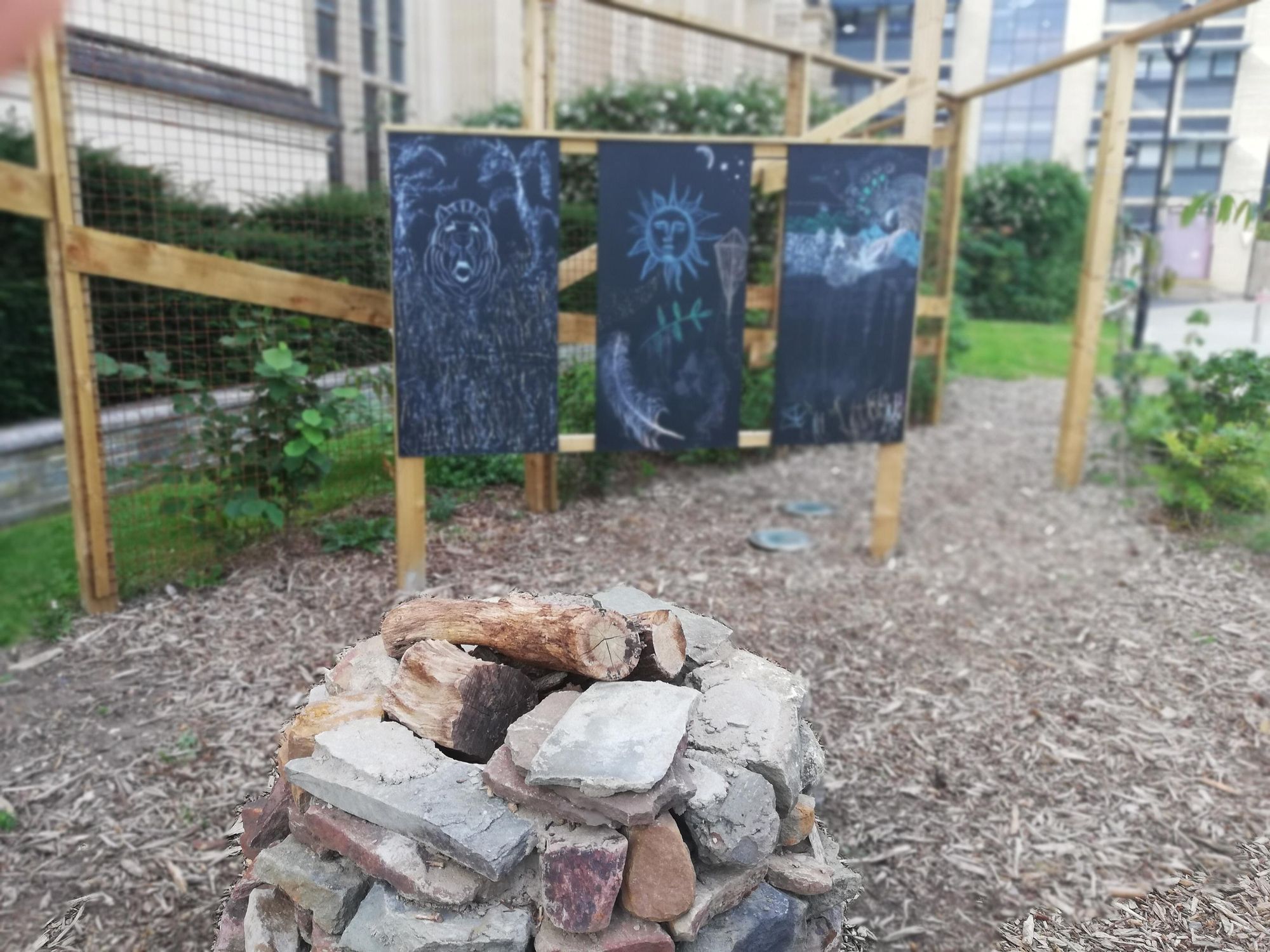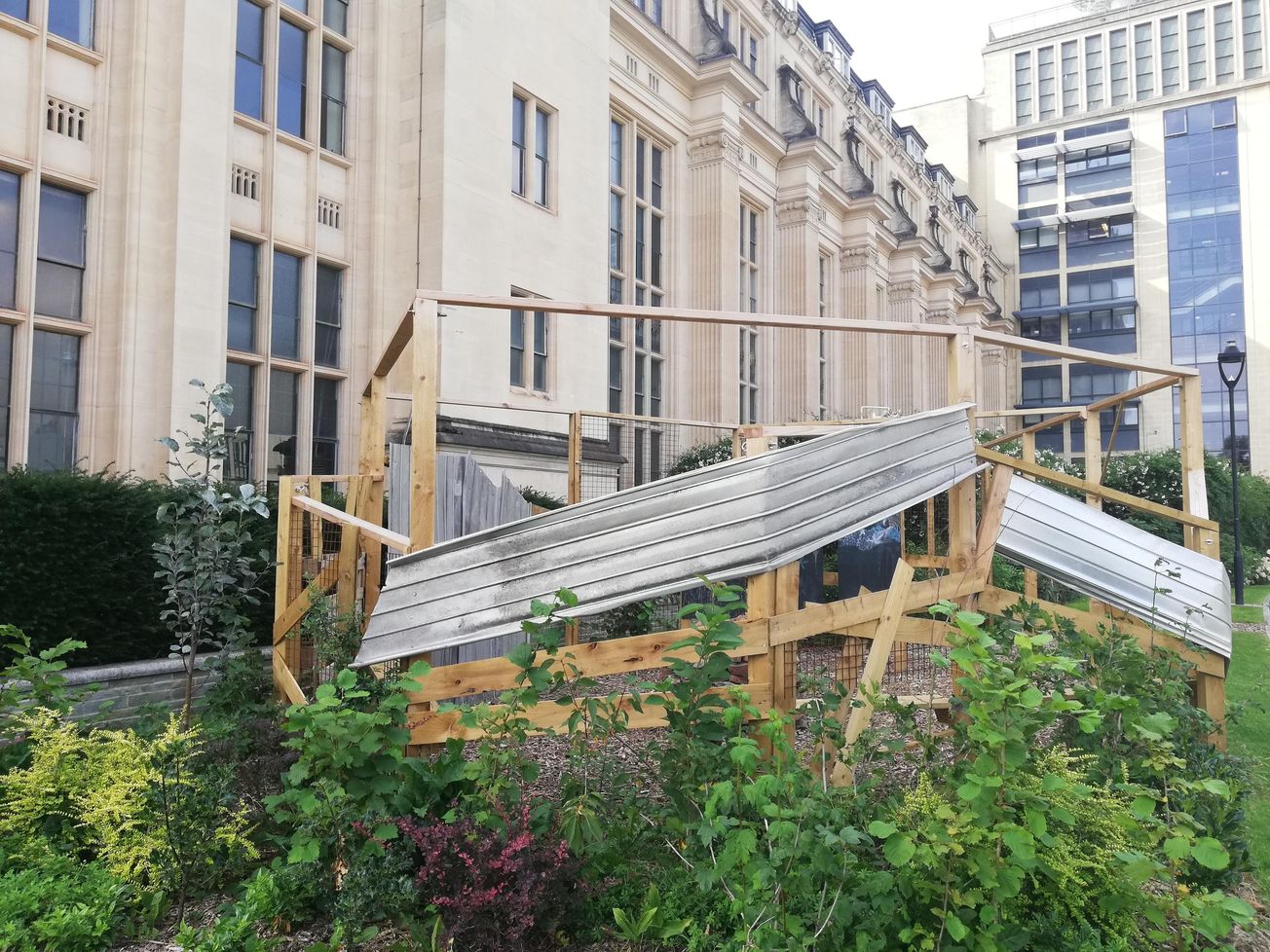By Sarah Dalton, SciTech Editor
The University of Bristol’s brand-new project ‘(de)Bordering’, based in Royal Fort Gardens, hosted its launch event last night. Epigram went to find out what it’s all about.
Built in the summer of 2021 by professors, artists and students alike, project ‘(de)Bordering’ is an outdoor space which encourages us to ask how ecological thinking develops our understanding of migration, and whether the naturalized can ever become native.
Neighbouring the physics building, the primary structure (named the Hearth) was built as an outdoor classroom, a space for open discussion about the questions it raises, and a welcoming environment to bring together people, pollinators and plants under the same roof. The smaller structure opposite (named the Hide) provides a space for smaller one-on-one discussions and individual reflection.

The project was first conceived in March 2021 by Professor Bridget Anderson from the University of Bristol’s Migration Mobilities Institute (MMI), environment artist Charli Clark, and transdisciplinary artist researcher Dr Paul Hurley. The team, who were loosely inspired by the Calais Jungle, were also ably supported by Dr Nariman Massoumi, Professor Katherine Charley, and the Brigstow Institute at the University.
Describing the project as a ‘living laboratory’, Professor Anderson noted how: ‘Humans and nonhumans regularly migrate. Birds and insects move to seek food and more hospitable conditions. Humans migrate from hostile circumstances. Such parallels offer us spaces to think with more-than-human migration in messy contexts such as climate change, whilst attending to complexity and resisting othering or colonizing metaphors.’
'We've had professors up ladders, drilling holes!'
When discussing her choices behind the design of the structure, artist Charli Clark added that: ‘If we make the environment hospitable to non-humans, it will allow us to talk about humans in relation to non-humans.’ The design of project (de)Bordering was no accident. Built by volunteering professors and students, and made from metal, mesh and wood, the style can only be described as ‘ad-hoc architecture.’
Whilst the metal provides human shelter and the mesh helps the plants to grow, the obscure angles have ‘edges of inhospitableness, creating a welcoming atmosphere but also questioning what welcoming means.’ At the center of the benches and blackboards lies a firepit, which Clark described as an ‘important statement’ as ‘in lots of cultures, a fire is a place of home.’

The choice of plants encasing the structure has also been carefully curated to promote discussion about nativity and migration. Professor Anderson explained that: ‘What counts as a native is also disputed botanically. Some would consider many of the plants you can see here as not native because they did not evolve in situ – despite their familiarity to people who have grown up in England.’ In this way, the selection of plants found in the space are metaphors 'as figures of thought as much as figures of speech.’
Dotted around the plots, are QR codes with videos of conversations with the team and invited experts, to help fuel these discussions which aim to bring together the natural and social worlds.
Royal Fort Gardens receives fourth consecutive green space award
A-Z of climate action in Bristol: 26 projects, people and problems
When asked about the future of the Heath and the Hide, Professor Anderson concluded that: ‘I hope the (de)Bordering plot will grow as an interdisciplinary living lab for several years. We are particularly keen to engage with those in the sciences.’
To see for yourself, go and visit (de)Bordering next to the Ivy Gate Building, contribute to the blackboards, sit and reflect on the benches about how we can continue to deborder scientific disciplines, and begin those meaningful discussions.
Featured Image: Epigram/Sarah Dalton
Have you been to visit (de)Bordering yet? Let us know what you think...









